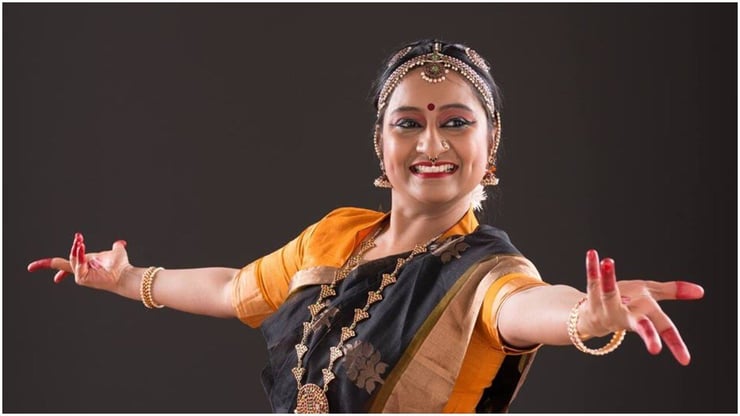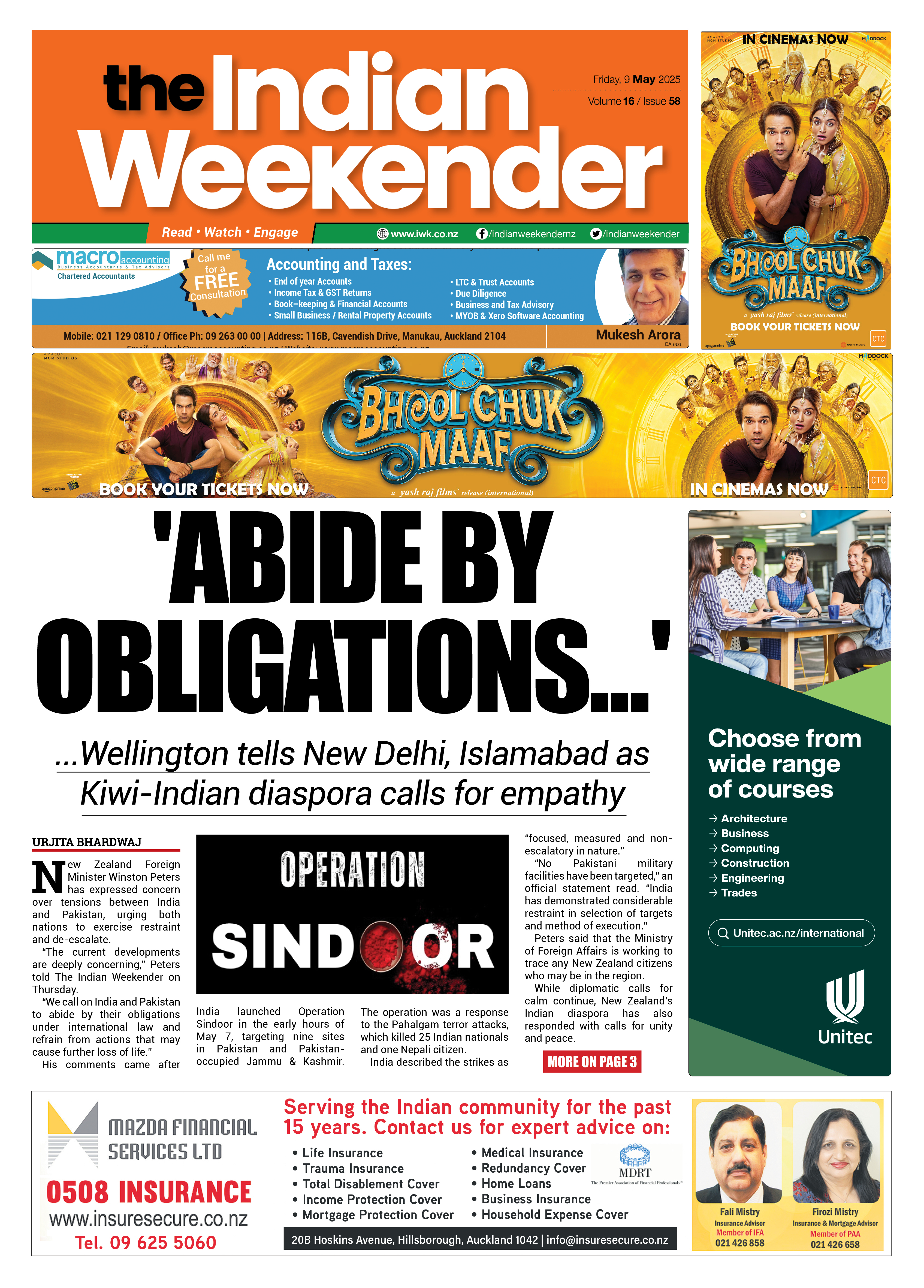Mastering the art of Indian classical dance

An Indian classical dancer from South Island, Swaroopa Unni will be exploring the dance form of Bharatanatyam in Sringaram—Dance of Love at Auckland’s Tempo Dance Festival on October 6 and 8. Indian Weekender spoke to Unni to find out more about her work, her dance school in Dunedin and her journey as a performing artist.
For New Zealanders in Dunedin—like for most New Zealanders across the country—the mention of an Indian dance style spurs up the image of flashy Bollywood songs. Most remain unaware about the varied dance forms originating from the different states of a country that has a rich cultural diversity. So when Swaroopa Unni introduced herself as an Indian dancer in Dunedin, it was assumed that she danced to Bollywood numbers. But Unni’s story lies on the other end of the dance spectrum.
A small community in Dunedin now knows what Indian classical dancing is, and Unni takes a part of that credit. She moved to New Zealand in 2010, and her desire to launch herself as an artist made her volunteer for performances in the city. After her solo performance at the Dunedin Fringe Festival, enquiries poured in and soon after, Unni began conducting classes. “I started Natyaloka School of Indian Classical Dance in 2011 in a spare room at my apartment with about three students,” she says. And soon enough, the three-student class would grow, and Natyaloka would move from Unni’s residence to a dance studio.
Dancers at her school are introduced to the different aspects of the dance form. “Natyaloka encourages discussion about the topic on dance history, mythology, feminism, our identity as dancers, music, rhythm, and how important it is to look around us with compassion and the importance of learning an art form,” Unni says.
But Unni’s journey as a performing artist has been slow, albeit interesting. Talking about her initial days in the city, she says, “I initially danced Mohiniattam and Kuchipudi to introduce some of the dance styles that we have, but I realised that I need to take one at a time. So I started conducting workshops and performances to promote Bharatanatyam. It has been a slow process, and there are a lot of people who don’t know what Bharatanatyam is even now. It is difficult for people to pronounce the name right, but a large part of the Dunedin community now knows that there is another Indian dance form. People have been supportive and encouraged us. They are keen to know more about it.”
Natyaloka has now integrated itself into the artist community in the city and plays an integral part in all council and community celebrations. The school moves into its fifth year in Dunedin this year and will be celebrating by organising a fundraiser called Yaathra—The Journey on September 18, the proceeds of which would go to KidsCan and SPCA Otago. “Yaathra will give a glimpse of how immigrants came into this country and created a home away from home,” says Unni. “For this event, we are collaborating with Taonga Puoro artists from Dunedin and with Sandeep Pillai, a musician from India, who will compose a Sufi song for us.”
A family tradition of introducing children to dance and music became four-year-old Unni’s first foray into the dance form of Bharatanatyam. At the age of nine, she had her arangettram—her first debut performance. “Arangettram is the stepping stone for further training in dance,” she says. “I continued learning Bharatanatyam and started training in Mohiniattam and Kuchipudi, too.” Unni has been dancing all her life. She represented her school, university, and her dance school in different competitions and programmes. When she moved to Bangalore for work, she started learning Kathak from her gurus Nirupama and Rajendra in Abhinava Dance Company.
Unni has performed on several stages in India as part of her dance school Nrithyalaya School of Indian Classical Dance in Calicut under the guidance of her guru Kalamandalam Saraswathy and Kalamandalam Vinodini. She has performed at events such as the Hampi Dance Festival, State Tourism Festivals and Nishagandhi Festival.
Unni continued pursuing her passion in Dunedin. Her performances included the Body Festival Christchurch, Moving Communities Conference at the University of Otago and Undisciplining Dance Symposium at the University of Auckland.
From Sadir to Bharatanatyam—the revival of the dance form
 Her upcoming performance Sringaram—Dance of Love will take place at the Tempo Dance Festival in Auckland on October 6 and 8 at Q Theatre along with a workshop on October 8 where Unni will be teaching an excerpt from Sringaram. Unni says that the basis of her dance performance goes back to the history of Bharatanatyam. The genesis of the dance form is quite complex. “It evolved from Sadir and was reformed to Bharatanatyam as we see now,” explains Unni. “Sadir was practised by a community of dancing women called devadasis. They were well-versed in poetry, literature, music, and dance—a privilege that other women didn’t have during that time. Dedicated and married to the local deity, these women had patrons—kings and wealthy men. Apart from their ritual dances at the temples, devadasis also danced at the king’s court, salons, and soirees.”
Her upcoming performance Sringaram—Dance of Love will take place at the Tempo Dance Festival in Auckland on October 6 and 8 at Q Theatre along with a workshop on October 8 where Unni will be teaching an excerpt from Sringaram. Unni says that the basis of her dance performance goes back to the history of Bharatanatyam. The genesis of the dance form is quite complex. “It evolved from Sadir and was reformed to Bharatanatyam as we see now,” explains Unni. “Sadir was practised by a community of dancing women called devadasis. They were well-versed in poetry, literature, music, and dance—a privilege that other women didn’t have during that time. Dedicated and married to the local deity, these women had patrons—kings and wealthy men. Apart from their ritual dances at the temples, devadasis also danced at the king’s court, salons, and soirees.”
But this soon changed when India came under the Colonial rule. The practice was denounced; it was termed deplorable. “India was going through a turbulent time,” says Unni. “The country needed a cultural beacon and thus Sadir was reformed to Bharatanatyam.”
Sringaram—Dance of Love is Unni’s journey of exploring some of the masterpieces in Bharatanatyam called Javalis and Padams danced by the devadasis. “These short compositions explored the different layers of basic human emotion—love,” says Unni. “As part of the cleansing of the dance form, these compositions were either reinterpreted with a fervor of bhakti or omitted from the repertoire. These compositions are resurfacing now, thanks to artists and scholars who are acknowledging the history and these sonnets. These compositions also reflect the society that the devadasis lived in. It also brings into question the complexities of what we consider moral and immoral values, especially for women.
“Sringaram is my way to open up the discussion on the possibilities of Bharatanatyam and its different layers like its history—the role of devadasis, its narrative quality, its theatrical possibilities, its adaptability, and its reforms. It is more contemporary than we think it is. It is about acknowledging the history and these women."



